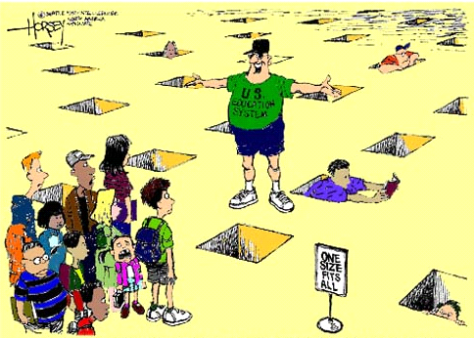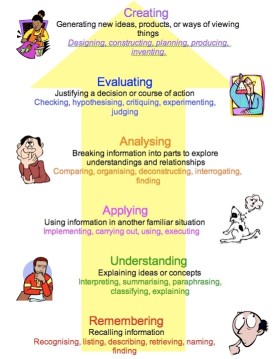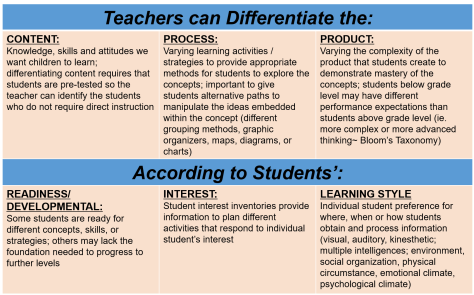Lena presented this week on what a difference differentiation can make with our students.
AN OVERVIEW OF DIFFERENTIATION STRATEGIES

As teachers we often make the mistake and think that teaching is a one size fits all. At Westfield Academy we have a range of students from those who are gifted and talented to those who are extremely academically weak. We have students who lack confidence but don’t lack ability, students who need support with organisation and students who need to be supported to complete basic tasks or pieces of work. Above all, all are students who need to be stretched and challenged every lesson. As teachers how do we cater for all and what key strategies can we implement to compliment our teaching and support our students?
Differentiation can take many forms including:
- By outcome
- By task
- By questioning
- By support
- By input
When planning lessons we need to know what should students know, understand, and be able to do as a a result of this learning assignment?
This Learning Direction is fundamental…
Following this, comes further consideration…
How am I going to know who’s learning what I intend, and who already knows it?
What am I going to do now that I know who’s where relative to my learning goals?
What do I need to do to ensure that my classroom actively supports the success of each student?
To answer the questions above it is imperative that each teacher knows their students as well as they possibly can. Teachers need to access provision plans where available and along with this liaise with their LSA where necessary. LSA’s are a vital resource that play a big part in the success of our weaker students.
Strategies to consider…
By outcome:
- What are your objectives for the lesson? Know where you are heading with a lessons and make sure your students know too. This gives focus to students who may be unorganised or unsure of what comes next.
- ‘All’ ‘Most’ ‘Some’ ? Always keep an open mind when planning lessons and be mindful that a range of tasks is important along with the fact that not all students will be able to access all of the work set. Plan with Gifted and Talented, SEN and average ability students in mind.
By task:
- Language – modify language for G+T/SEN. Questioning from teacher can be styled towards particular learners, open and closed questions (obvious to observers).
- Limit reading/writing for SEN pupils, often where difficulties lie.
- Provide prompts/key vocabulary.
- Activities – expectations higher for upper levels – Quality not quantity!
- Extension work – challenge more able (open ended tasks)
By questioning:

- Are we aware of Blooms Taxonomy and where our students sit? Are we providing the skills and language break down to allow our students to access the skills they need to move up the hierarchy? Blooms can also be used to gauge the types of questions we use with our students and slowly build a students confidence and in turn access their higher order thinking skills.
By support:
- Your LSA….. Tell them what you want them to do. Communication is key to success. LSA’s rarely need to be stuck beside ONE pupil only.
- Use their expertise of the child to support your expertise of teaching and subject knowledge
- Discuss with them about the pupils’ progress/needs/difficulties
By input:
- Do all pupils need the same input?
- Consider differentiating the teaching of the task as well as following tasks…
- For example, if you’re aware that part of the group don’t need to ‘overlearn’ – why not set them off on a task while focussing on those that will require extra input?
Summary
Differentiation is…
- Varied tasks for students at different levels of readiness or achievement
- Authentic choices for students to demonstrate what they have learned
- Adjustment of pacing, resources, and instructional strategies to meet the needs of ALL students
- Using pre- and post- assessments to create a good fit of instruction to the students
Differentiation is not…
- Just more of the same work for advanced students
- Random groups all doing the same work
- Advanced students tutoring struggling students
- Mostly whole class instruction with the same assignments for everyone
- Only for weaker classes
- Grading differently based on perceptions of students’ capabilities
- Blue paper vs. green paper
Overall with keeping differentiation in mind we allow the following:
- Increased academic progress
- Increased confidence in learning
- Enhanced intrinsic motivation for learning
- Increased independent learning

Lena’s test yourself test:
1. The teacher’s responsibility in providing appropriately differentiated instruction includes what five tasks?
2. What will you consider trying in your classroom?
3. Have your ideas about differentiation changed? Explain why or why not.
Overall, how would you rate your current skills and expertise in differentiation? What information or assistance do you still need?
Give these a go:

- Simple: quick and easy to do
- Little more effort: about a minute or two of your time
- More effort: Preparing longer term resources – but can be used over and over again
Simple:
- Give out homework at the beginning of the lesson
- Use “comic sans” or Century Gothic font
- Change background to light blue
Little more effort
- Make laptops available for those who benefit from/need word processing
- Allow them to show what they know in a variety of ways, e.g. mindmap, bullet points
- Copying from board: write each line in a different colour – easier to find their place
More effort
- Scribe for them
- Create ‘fill the gaps’ sheets
- Have writing frames/templates available in classroom
- Drawing grids/tables/graphs etc. can be REALLY difficult to complete for those with poor motor skills. Unless that is the focus of the task/assessment, provide the grid
- Top ten topic vocabulary or *subject specific words. Must allow over-learning – won’t be recalled otherwise
- Encourage pupils to identify words they don’t know – reward ‘I don’t know what that means’ so pupils know it is ok to be unsure.
- Prepare a reduced version of text, find simpler synonyms for more sophisticated vocabulary.
- Find a simpler text – for LA learners it might be worth looking at texts aimed at KS2 or even KS1 for specific pupils.
- Provide a glossary –pupils may be unable to use a dictionary.
- Homework:
- Staple homework instructions into their planners or email to them.
- Limit time spent/amount required otherwise if they are struggling they might be there for hours!
- Research: written questions which must be answered on paper rather than “Find information about the Tudors”
- Limit number of facts to find (find 5)
- Break big questions into smaller steps – bullet point mini questions. – When did the Tudors come to the throne? What were their names? Etc.
- Provide key words and teach “Find” on computers – give specific websites.
- Teach pupils how to skim and scan (Skim = general info – Scan = searching for key words/information.







